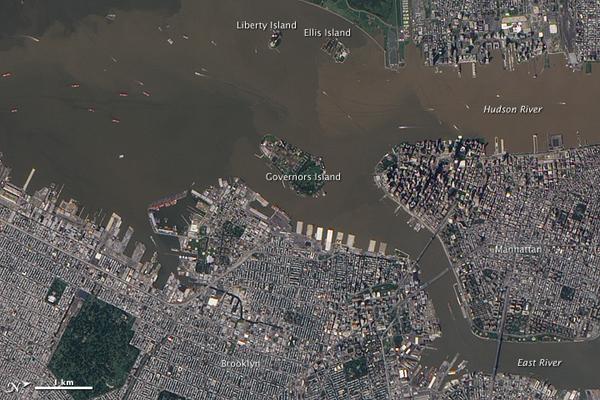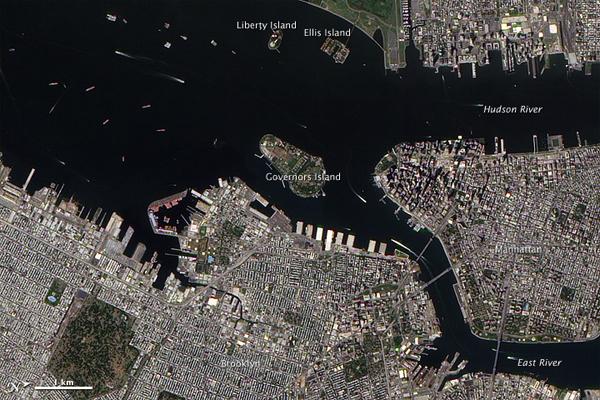
Hurricane Irene Stirred Up New York Waterways

In the wake of Hurricane Irene and Tropical Storm Lee, sediment choked the Hudson River in New York City early September 2011. On September 7, The New York Times noted the river's unusual brown or reddish hue, likely driven by runoff occurring upstate.
The Advanced Land Imager (ALI) on NASA's Earth Observing-1 (EO-1) satellite captured these natural-color images of the Hudson River and East River. Both images are rotated and north is at right. The top image shows the area on September 12, 2011. The bottom image shows the same place about a year earlier, on September 2, 2010.
In September 2010, the water is navy blue. One year later, the water is muddy brown, and the brown hue appears more intense in the Hudson River than in the nearby East River. [View image comparison.]
Flooding not only raises river levels, but also increases the amount of sediment they carry. Torrential rain eats away at the ground, washing mud and debris into streams. After it is deposited into a river, sediment may sink to the bottom of the riverbed, or may flow with the water toward the sea. Multiple rivers feed the Hudson, and some of the sediment winding up in the river in early September 2011 included reddish clays from the Catskills region, The New York Times reported.

- Photos: The Serene Splendor of the Salty Salton Sea
- How a Hurricane Impacts the Ocean
- Sediment Spews from New England River After Irene
Sign up for the Live Science daily newsletter now
Get the world’s most fascinating discoveries delivered straight to your inbox.










